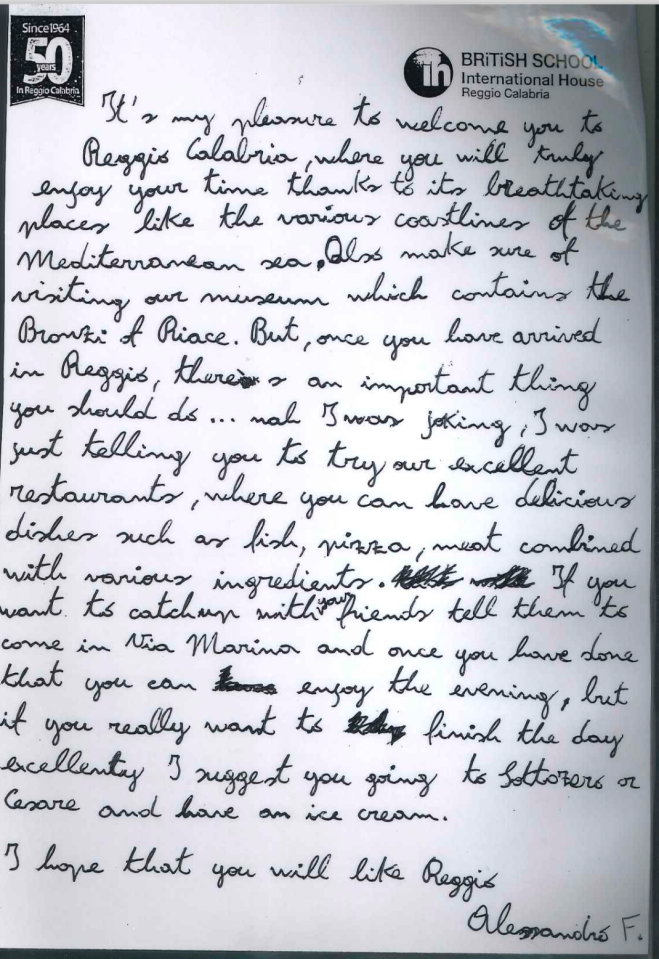In all fairness, the title of this post should really be something like “I did a couple of odd jobs here and there to help out with the absolute ocean of work involved in organising and successfully running an international conference”. In any case, for the purposes of this blog post, I hope you can find it in your heart to allow me this little bit of click-bait.
Now that we’ve got that out of the way, down to business. By now you may have heard that my school hosted the IH Young Learners conference last week, which I co-wrote the application for and then eventually got the chance to speak at; all in all, a developing teacher’s dream come true, prosecco all round, clink, blah blah blah …
However, amid all the networking and sharing and developing, there was one particularly special moment during that long conference weekend, a moment that I know I will never, ever forget as long as I work in ELT: on arrival at the conference, every single visiting delegate received a handwritten welcome letter from one of our young learner students.
The idea was deceptively simple, and utterly perfect in terms of the message we wanted to send to our international visitors. Our original conference application stressed the strong ties our school has with the local community, especially the state schools where we run outreach programs. Our directors were adamant that if we were to host a conference for YL teachers, then our YL students should be involved somehow, and they were absolutely right.
Once I had come up with the idea, we just needed to give our students a little nudge in the right direction. To help them get their ideas out onto the page, I designed a couple of easy-to-adapt lesson plans for letter-writing as well as the teaching materials to go with them, including three model welcome letters at the A2, B1 and B2 levels. Our fantastic team of YL teachers then took those plans and materials into their regular English classes and ran with them, and our ridiculously talented YL students did the rest!
Some of them wrote about their favourite restaurants and dishes to try, some of them explained local traditions and cultural references that they thought might interest international visitors, and some chose to give a more warts-and-all description of the reality of living in one of Italy’s forgotten southern regions. Different though they were, however, all the letters were nonetheless spectacular reads.

To encourage participation, the letter-writing task was pitched as a city-wide competition, open to our internal YL students as well as all of our external teen students at local state schools. All in all, just over 120 young learners aged 11-18 wrote welcome letters for our incoming delegates. My colleague @lennyberlenny and I then had the unenviable task of sorting through them all to choose 54 winners, one for each of the delegates coming to visit us for the conference.


The reactions as the letters were discovered and read were absolutely priceless. We had gasps of delight and surprise, and even a couple of tears! As a foreigner who has had the privilege of getting to know this sleepy little part of Italy over the last 18 months, I was so incredibly proud and moved to watch others be offered the same insight into the local culture, especially in a place that has had a historically difficult relationship with outsiders.

The cherry on top was unexpected even for me: our delegates were so impressed by the gesture that they have started writing back to our students. The international community has helped our YL students use real English to speak to real people for real reasons. As an ELT teacher, what more could I possibly wish for?

